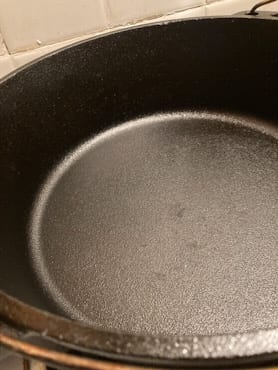Cast iron has been used since biblical times, and for good reason! Being non stick, chemical free, and heating evenly are just a few benefits of these magnificent pots and pans. It is important, however, to ensure your cast iron is properly seasoned to promote longevity and keep it nonstick.
1. To begin place your skillet (or cornbread pan, Dutch oven, etc.) in a 200* F oven to open the pores, let it sit in the oven for 10-15 minutes.
2. Remove from oven and add a thin layer of oil. Any oil will work, but due to the high smoke point of Avocado oil it is what I chose to use. Coat the entire surface- outside, inside, and handle, just make sure not to leave a real thick layer on it. Wipe off any excess, then wipe off again, leave just a thin layer on it.
3. Place in a 400* oven upside down, leave for an hour and then turn off oven. Once then skillet can be touched by hand pull it out and repeat the process.
4. Repeat the process 3-5 times, you want a nice black coating all over the pan free of any silver showing through.
If you have a pan like my skillet that has yucky stuck on spots, use a self-cleaning oven or a fire pit to remove. If using the oven set to clean and place your pan upside down in the oven. For a fire pit place the pan upside down over the flame and let sit overnight so the burnt on things can cook off.
Seasoning your cast iron on a day the windows can be opened is preferable, there will be some unpleasant smells emitted from your oven. If you are unable to open the windows, turn on the exhaust fan and ceiling fans to combat the odors.







